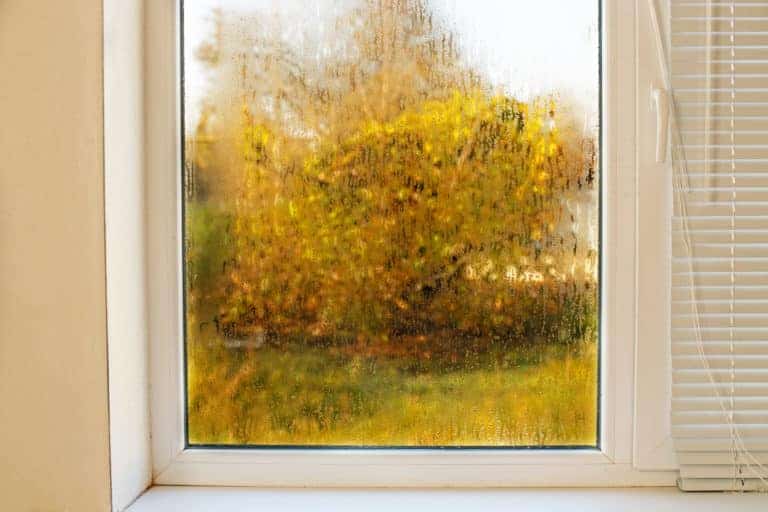So your window is broken. Whether the culprit was a backyard baseball game, freezing cold weather, or rotted wood, you want a quick fix so that you can keep bugs out, heat in, and your energy bills down.
But what’s the right solution—repairing the broken window element or replacing the entire window?
The right answer for you depends on your budget and the specific issue with your window. In some cases, repairs are fast and affordable. In others, a window replacement will provide long-term value through lowered bills and increased home value.
Are you ready to figure out how to deal with your broken window? In this short guide, we’ll go over different kinds of window issues and the best potential solutions.
Cracked and Broken Glass
Glass is fragile, and cracks or fractures to your window glass can stem from many more causes than the classic baseball over the fence.
Some possible causes for broken and fractured include:
- Temperature changes – Glass contracts in cool weather and expands in the heat. If your windows experience frequent swings between hot and cold temperatures, the rapid changes can lead to “thermal shock” and stress fractures. This may be even worse if the window is in a shady part of your house.
- Impact – Impact due to fallen tree branches or a similar factor can potentially crack window glass. There’s also the risk that a thief will intentionally break in through your windows. While there’s little you can do to prevent accidents, fixing your window can also be an opportunity to implement better safety solutions.
No matter the cause of your cracked window, you have two options: repairing the affected glass or replacing the entire window.
It’s usually fast and cheap to repair the glass. If temperature stress was a factor, you may want to opt for thicker glass. If you experienced a break-in, considering adding a security screen this time around.
However, there are some situations where you may want to consider replacing the entire window:
- You have inexpensive vinyl windows and the window glass replacement cost of the entire vinyl window would be comparable in cost to repair it
- You have single-pane windows and want to upgrade to a double pane window, triple–pane window, or Energy Star window to save on your energy bills and reduce the likelihood of cracks and fractures
- You have antique windows that require custom cut glass and are complicated to disassemble, repair, and reassemble
- You have other issues with your window performance or safety
In short, it’s sometimes less expensive to replace and repair.
What are the other kinds of issues that could affect your window and necessitate a full replacement?
Deteriorating Wood
Sometimes, the issue with a window isn’t the glass, but the wood.
- Wooden frames rot over time, letting water and humidity into your home. Damage may affect only the exterior frame or the entire window.
- Muntins—the wood between panes of glass—can also rot or break.
- Likewise, sashes—the moving parts inside the window frame—can break or deteriorate.
So, should you repair or replace home windows with wood damage?
Whether the issue is your frame, muntins, or sashes, the first step is consulting with a neighborhood professional to understand the extent of the damage to your wood.
- Very old wood may have extensive rot. In this case, the repair could entail rebuilding large parts of the window, and the cost will add up.
- In other cases, the rot may be caused by inadequate paint or frequent exposure to water (i.e., your window is frequently doused by your sprinkler system). In cases like these, it may be less expensive to repair localized rot and address the root issue.
If the damage is extensive, consider replacing your window rather than repairing it. The investment will pay off over time, increasing your house’s curb appeal while reducing your energy bills.
This time, make sure your window is properly weather-treated or opt for a more weather-resistant material.
Foggy Windows
Sometimes, there’s a good reason why your windows are foggy—it’s freezing cold outside, and you’ve been cranking the heat. The difference in temperature naturally creates condensation.
But if your windows take on a permanently foggy or frosted look for no discernable reason, there may be cause for concern.
Modern double-pane and triple-pane windows are permanently sealed together to create an insulated glass unit (IGU). When condensation collects between the panes, it creates the appearance of fog.
Can you repair a foggy window?
The short answer is no. Because the panes are sealed together, a glazier will not be able to separate and repair the IGU.
In this case, you can take one of two paths:
- Replace the window sash and IGU
- Replace the entire window (frame, sash, IGU, and all)
If you love your windows, see overall savings by replacing only as much as is necessary. If it’s time for an upgrade, start window shopping!
Foggy Window Repair IS OUR PURPLE COW! We are the leaders in this niche service. We probably don’t want an article saying it’s a myth…
Additionally, with many modern windows, there’s no need to replace the sash… just the IGU.
Inoperable Windows
Maybe your windows look great when they’re shut. The only problem? They stay that way, even when it’s 90 degrees outside.
There are many potential causes behind inoperable windows:
- The window is painted shut (the sash is stuck to the frame)
- Dust and debris have collected in the sashes’ tracks
- There are broken cords, springs, or weights that prevent the sashes from moving
Even if you can’t force your cranky window open, there’s a good chance that an experienced neighborhood professional can easily repair the broken part, saving you on the cost of a replacement.
But if you have antique windows with difficult-to-source parts, it will require more ingenuity—and more expenses—to repair them. Unless you’re willing to invest in these windows’ upkeep for years to come, this could be a sign that it’s time to upgrade your windows before the next problem strikes.
Drafts
Can you feel the cold air blowing through your windows on winter nights?
Maybe it’s even worse than that and water actually seeps in through your windows or frames.
There are several potential factors contributing to your drafty windows:
- Damaged caulking
- Rotted wood
- Ill-fitting sashes
- Weatherstrips in need of replacement
We’ve discussed some of these issues, so you already know that significant rot will necessitate a window replacement.
The good news?
In many cases, all you need to do is repair your windows’ caulking and weather strips. This is a relatively straightforward task that can significantly reduce your energy bills—not to mention spare you from the cost of replacing your windows!
You may also be able to replace your exterior casing without replacing the entire window (sashes, glass, etc).
No matter the specifics of your broken window, there are many circumstances where you can save money by opting to repair rather than replace the damaged parts. However, in some cases, replacing your windows will pay dividends.
New, energy-efficient windows can:
- Cut energy costs by up to 15% annually
- Improve the curb appeal and resale value of your home
- Help you save on future repairs by cutting the problem off at the root
So when should you replace it, and when should you repair it?
Our best advice is to get a professional assessment so you can make the best choice for your budget and goals.
Sources:
Procedia Engineering. Thermal Shock Effect on the Glass Thermal Stress Response and Crack Propagation. https://www.sciencedirect.com/science/article/pii/S1877705813013003
The Spruce. Deciding Whether to Replace or Repair Windows. https://www.thespruce.com/windows-replaced-rather-than-repaired-1822905




